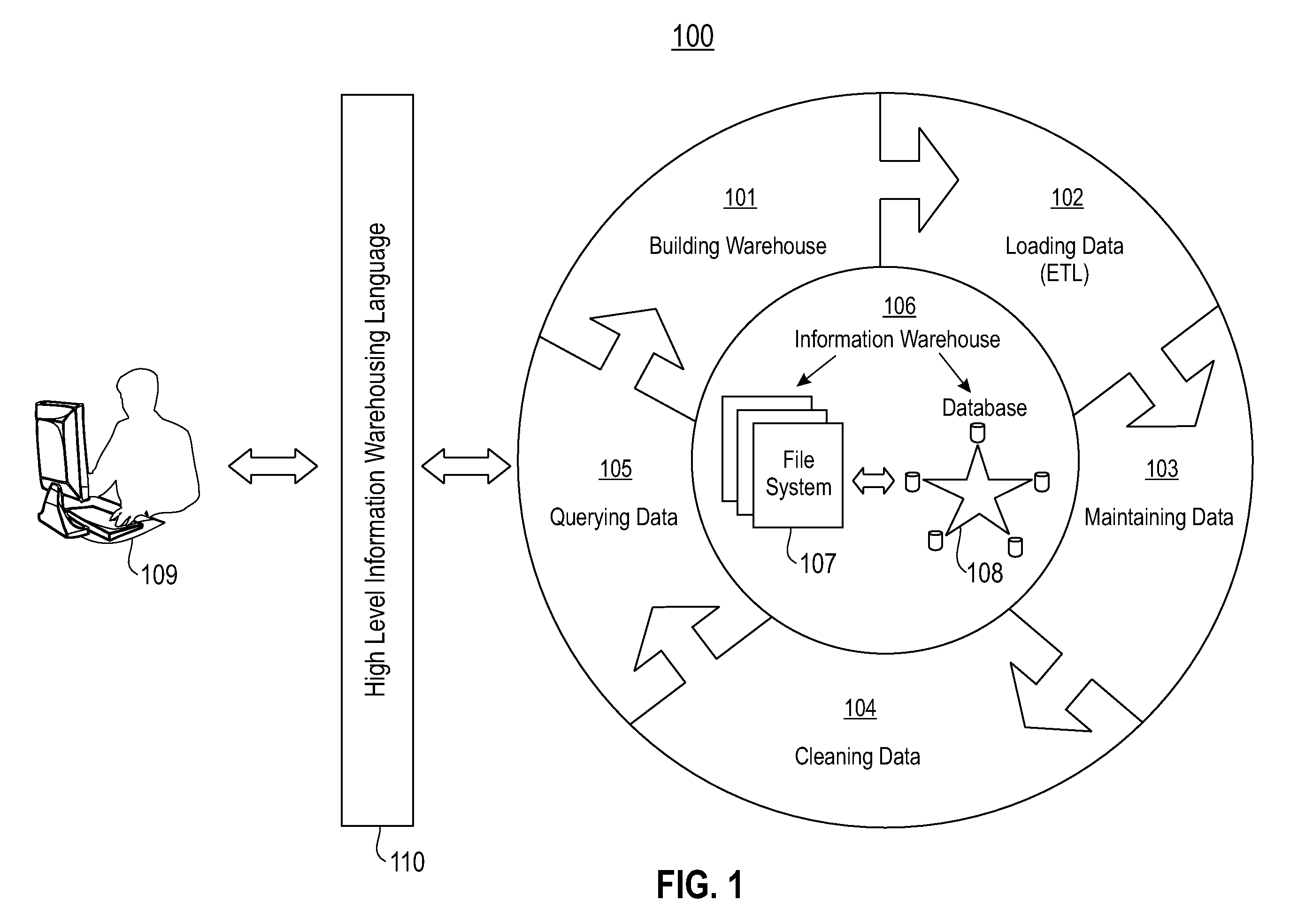Business information warehouse toolkit and language for warehousing simplification and automation
a business information and warehouse technology, applied in the field of information storage and retrieval, can solve the problems of inflexible and insufficient coping, inability to operate and learn, and insufficient functionalities, and achieve the effect of increasing in the functionalities of the insufficient and inconvenient use of the inconvenient storage and retrieval field
- Summary
- Abstract
- Description
- Claims
- Application Information
AI Technical Summary
Benefits of technology
Problems solved by technology
Method used
Image
Examples
example 1
[0049]Databases may use different keywords for defining the same data type. For instance, for the integer data type, DB20 uses “INTEGER” and MySQL® uses “INT”; for the large object data type (LOB), DB20 uses “CLOB (size)” and MySQL® uses “TINYBLOB”, “BLOB”, “MEDIUMBLOB”, and “LONGBLOB”.
example 2
[0050]Databases may have different ways to drop an index. For instance, in DB2®, Oracle® and PostgreSQL™, the syntax is “DROP INDEX index_name”. In SQL Server™, however, the syntax is “DROP INDEX table_name.index_name”. MySQL® uses “ALTER TABLE table_name DROP INDEX index_name”.
example 3
[0051]Databases may have different ways to define automatically incremental attributes. For instance, in DB2®, the syntax is “NOT NULL GENERATED ALWAYS AS IDENTITY”. In MySQL®, the syntax is “NOT NULL AUTO_INCREMENT”. In SQL Server™, the syntax is “NOT NULL IDENTITY”. Other databases may also have their own syntax.
PUM
 Login to View More
Login to View More Abstract
Description
Claims
Application Information
 Login to View More
Login to View More - R&D Engineer
- R&D Manager
- IP Professional
- Industry Leading Data Capabilities
- Powerful AI technology
- Patent DNA Extraction
Browse by: Latest US Patents, China's latest patents, Technical Efficacy Thesaurus, Application Domain, Technology Topic, Popular Technical Reports.
© 2024 PatSnap. All rights reserved.Legal|Privacy policy|Modern Slavery Act Transparency Statement|Sitemap|About US| Contact US: help@patsnap.com










